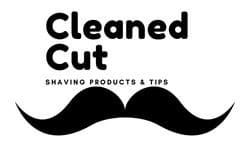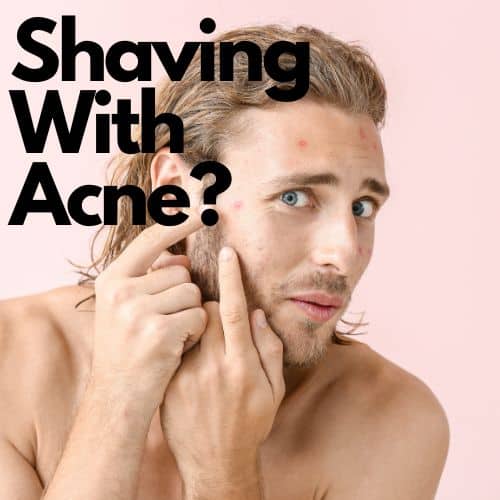Are you an acne sufferer looking for ways to shave without making the condition worse? You’re not alone! Millions of people worldwide suffer from acne, and many of them are afraid to shave for fear of worsening their condition.
The truth is, shaving can actually be beneficial for acne-prone skin if done correctly. In this article, we’ll go over what causes acne when shaving, the types of razors you should use, pre- and post-shave care, acne-specific shaving creams, home remedies for acne from shaving, and how to prevent acne from shaving.
Acne is one of the most common skin conditions in the world, affecting around 85% of people between the ages of 12 and 24. It can be a source of embarrassment and discomfort and can be tough to treat.
Whether you have mild, moderate, or severe acne, these tips will help you shave without increasing your breakouts. Keep reading for some solid tips on how to shave and not make your acne worse!
What Causes Acne When Shaving?
Acne is caused by a combination of factors, including hormones, genetics, and certain skincare products. When it comes to shaving, the main culprits are bacteria, irritation, and clogged pores.
Bacteria: Bacteria can accumulate on razors, which can transfer to your skin and into any nicks, cuts, or inflamed pores.
Irritation: Shaving can irritate the skin, especially if you’re using a dull razor or applying too much pressure. This can cause redness, and swelling, and lead to acne breakouts.
Clogged pores: When you shave, the hairs and other debris can become trapped in the pores. This can clog up your pores with a bunch of junk and cause you to have a breakout.
Pre-Shave Prep
Before you start shaving, it’s important to prepare your skin. This will help to reduce irritation and minimize breakouts.
The first step is to cleanse your skin. Use a mild cleanser that won’t strip your skin of its natural oils. This will help to remove any dirt, oil, and bacteria that could lead to breakouts.
Next, exfoliate your skin. Exfoliating will help to remove dead skin cells, which can accumulate on the surface of the skin and clog pores.
Apply products that will help reduce the friction of your razor against your skin, such as a good pre-shave oil and a shaving cream meant for sensitive skin.
Types of Razors
The type of razor you use is important when it comes to shaving with acne. It is counter-intuitive to use a razor with multiple blades when you are prone to acne. These types of razors build up more bacteria between the blades and you are essentially dragging a petri dish of gunk across your face.
If you haven’t yet, give a single-bladed razor such as a DE safety razor a try. These razors give an incredibly smooth shave and improve the look, feel, and health of your skin.
Post-Shave Care
After shaving apply a moisturizer. Moisturizing will help to keep your skin hydrated, which can reduce irritation and redness. However, it is important that you use a light moisturizer that won’t clog up your pores.
Acne treatments and creams should also be used after shaving. Always be sure to keep your skin as clean as possible.
The Benefits of Using Acne-Specific Shaving Creams
Using an acne-specific shaving cream can help to minimize breakouts. These creams are designed to reduce irritation, hydrate the skin, and prevent bacteria from accumulating on your razor.
Look for a shaving cream that contains gentle ingredients like aloe vera, glycerin, and tea tree oil. These ingredients will help to soothe the skin, reduce irritation, and keep breakouts at bay.
Home Remedies for Acne from Shaving
If you’re looking for natural remedies to help treat acne from shaving, there are a few options you can try.
Apple cider vinegar is an excellent home remedy for many different ailments, acne being one of them. ACV works to kill bacteria and cleanse the skin and clean it.
You can also use tea tree oil. This essential oil has antibacterial and anti-inflammatory properties that can help to reduce breakouts. You can either make your own DIY cleanser using tea tree oil, or you could purchase one that contains it like Botanic Hearth Tea Tree Face Wash with Mint.
Lastly, honey is another great natural remedy for acne. It has antibacterial and anti-inflammatory properties that can help to reduce redness and swelling. Combine honey, water, and salt and use it as an exfoliating cleanser.
How to Prevent Acne from Shaving
The best way to prevent acne from shaving is to take the right precautions. Here are a few tips to help you avoid breakouts:
- Clean your razor after each use. This will help to remove bacteria and reduce the risk of breakouts.
- Use a moisturizing shaving cream that is formulated for acne-prone skin. This will help to reduce irritation and keep your skin hydrated.
- Avoid using too much pressure when shaving. This can irritate the skin and lead to more breakouts.
- Change your razor blade regularly. Using a dull blade can cause irritation.
- Use an aftershave product. Look for one that is a healing post-shave.
Conclusion
Shaving with acne can be a daunting prospect, but it doesn’t have to be. With the right preparation, the right razor, and the right post-shave care, you can shave without increasing your breakouts and improve the overall look and quality of your skin.



